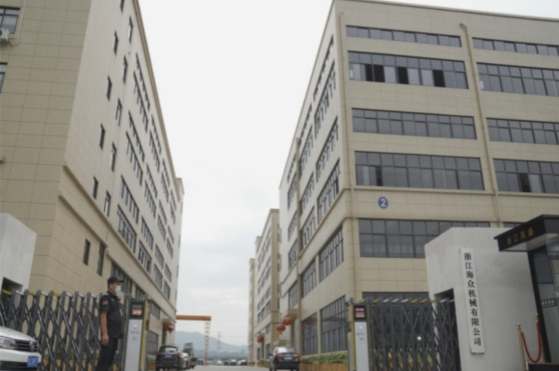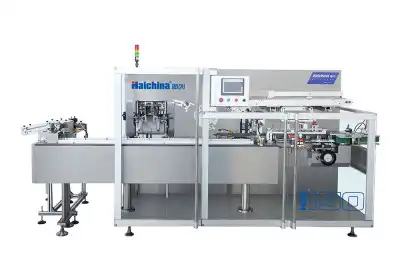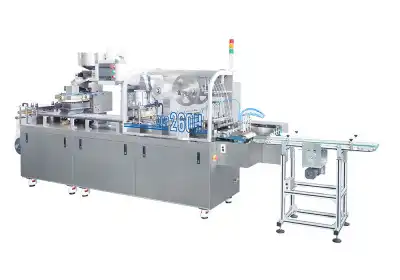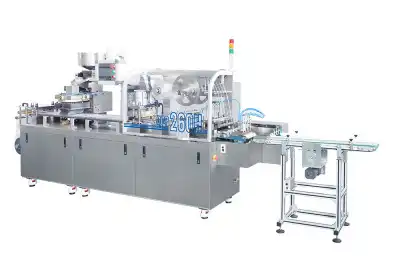Understanding Blister Packaging Methods
Thermoforming Process
The thermoforming process is at the heart of blister packaging. It involves heating a plastic sheet until it becomes pliable, then shaping it into the desired cavity or pocket using a mold. This process can be accomplished through various methods, including vacuum forming, pressure forming, or mechanical forming. The choice of method depends on factors such as the product's shape, size, and material properties. Advanced blister packaging machines can perform this step with high precision and efficiency, ensuring consistent quality across large production runs.
Cold Forming Technique
Cold forming is an alternative method used primarily for sensitive pharmaceutical products. Unlike thermoforming, cold forming doesn't involve heat. Instead, it uses pressure to shape aluminum foil into the required cavity. This technique is particularly suitable for moisture-sensitive drugs or those that may be affected by heat. While less common than thermoforming, cold forming offers unique advantages in certain applications, and specialized cold forming blister packaging machines are available for this purpose.
Sealing Methods
Once the product is placed in the formed cavity, the package must be sealed. Several sealing methods are employed in blister packaging, including heat sealing, radio frequency sealing, and ultrasonic sealing. The choice of sealing method depends on the materials used and the desired level of tamper-evidence. Modern blister packaging machines often incorporate multiple sealing options, allowing manufacturers to choose the most appropriate method for their specific product and packaging requirements.
Essential Components of Blister Packaging
Forming Films
The forming film is the plastic sheet that creates the blister cavity. Common materials include PVC (polyvinyl chloride), PET (polyethylene terephthalate), and PVDC (polyvinylidene chloride). Each material offers different properties in terms of barrier protection, clarity, and formability. The selection of the forming film is crucial as it directly impacts the package's appearance, durability, and protective qualities. High-quality blister packaging machines are designed to work with a variety of forming films, providing flexibility in material choice.

Lidding Materials
The lidding material seals the product within the blister cavity. It can be made from various materials, including aluminum foil, paper, or plastic films. The choice of lidding material depends on factors such as the required barrier properties, ease of opening, and product visibility. Some lidding materials are designed to be easily peelable, while others offer enhanced tamper-evidence. The compatibility between the forming film and the lidding material is crucial for achieving a secure seal, and modern blister packaging machines are equipped to handle a wide range of lidding options.

Backing Cards
In some blister packaging applications, particularly for retail products, a backing card is used. This card serves multiple purposes, including providing rigidity to the package, offering space for branding and product information, and enhancing the overall presentation. Backing cards can be made from paperboard, cardstock, or other materials. They are typically pre-printed and fed into the blister packaging machine during the assembly process. The integration of backing cards with the blister pack requires precise alignment and sealing, which is efficiently managed by advanced packaging equipment.

Advantages of Blister Packaging in Various Industries
Pharmaceutical Applications
The pharmaceutical industry is one of the largest users of blister packaging. This packaging method offers several benefits for medication, including protection against moisture and contamination, easy dosage management, and enhanced patient compliance. Blister packs can be designed with child-resistant features while remaining accessible for elderly patients. The transparency of the packaging allows for visual inspection of the product, which is crucial for quality control. Pharmaceutical-grade blister packaging machines are designed to meet stringent regulatory requirements, ensuring the integrity and safety of medical products.
Consumer Goods Packaging
In the consumer goods sector, blister packaging provides an attractive and functional solution for a wide range of products. From electronics to toys, blister packs offer excellent product visibility while protecting against damage and theft. The ability to customize blister shapes allows for innovative packaging designs that can enhance brand recognition and shelf appeal. Consumer goods manufacturers often use high-speed blister packaging machines to meet the demands of large-scale production while maintaining packaging quality and consistency.
Food and Beverage Industry
While less common than in other sectors, blister packaging is gaining traction in the food and beverage industry. It's particularly useful for single-serve portions, convenience foods, and products that require a high barrier against moisture and oxygen. Blister packs can extend the shelf life of certain food products and provide portion control benefits. Food-grade blister packaging machines are designed to meet hygiene standards and can be integrated into aseptic packaging lines for sensitive products.
Conclusion
Blister packaging has emerged as a versatile and effective solution across various industries, offering a blend of product protection, visual appeal, and convenience. The advancements in blister packaging machines have significantly enhanced the efficiency and quality of this packaging method. As consumer demands evolve and sustainability concerns grow, the blister packaging industry continues to innovate, developing eco-friendly materials and more efficient processes. Understanding the methods, components, and advantages of blister packaging is crucial for manufacturers looking to optimize their packaging strategies and meet the diverse needs of modern consumers.
Contact Us
For more information about our blister packaging machines and how they can benefit your packaging operations, please contact us at [email protected]. Our team of experts at Zhejiang Haizhong Machinery Co., Ltd. is ready to assist you in finding the perfect packaging solution for your products.




